 2021 Hyundai Elantra VII (CN7) Dimensions, Size & Specs
2021 Hyundai Elantra VII (CN7) Dimensions, Size & SpecsMeasurements of the 2021 Hyundai Elantra VII, engineered for optimal performance and comfort
| Dimensions | |
|---|---|
| Length: | 4676 mm184.1 in15.3 ft |
| Width: | 1826 mm71.9 in6.0 ft |
| Height: | 1415-1430 mm55.7-56.3 in4.6-4.7 ft |
| Ground Clearance: | 135-140 mm5.3-5.5 in0.4-0.5 ft |
| Trunk Capacity: | 402 liter14.2 cu ft |
| Weight Specifications | |
| Curb Weight: | 1160-1495 kg2557-3296 lbs |
| Maximal permitted Weight: | 1720-1895 kg3792-4178 lbs |
| Tire Specifications | |
| Rims Sizes: | 15-inch rims:
|
| Tire Sizes: |
|
The Hyundai Elantra VII (CN7), produced from 2020 to 2023 with model years starting in 2021, is a modern compact sedan that offers a well-balanced combination of size, practicality, and comfort. This generation of the Elantra measures approximately 4675 to 4676 mm (184.1 to 184.2 inches) in length, situating it comfortably within the midsize sedan segment. Its width ranges from 1825 to 1826 mm (71.9 to 71.9 inches), providing a spacious cabin while maintaining good urban maneuverability. The height varies between 1415 mm and 1430 mm (55.7 to 56.3 inches), offering a sleek and aerodynamic profile typical of contemporary sedans.
Weighing between 1160 kg and 1495 kg (2557 to 3296 lbs) depending on trim and equipment, the Elantra VII balances efficiency with stability. The vehicle’s maximum weight caps at 1720 to 1895 kg (3792 to 4177 lbs), which includes passengers and cargo. The Elantra provides practical utility with a luggage capacity of 402 liters (14.2 cubic feet), sufficient for everyday needs and family trips. Ground clearance is between 135 mm and 140 mm (5.3 to 5.5 inches), which strikes a good balance for comfortable city driving and occasional rougher surfaces.
The Elantra VII features a versatile range of wheel and tire options, enhancing both aesthetics and driving dynamics. Rims sizes vary from 15 inches up to 19 inches, including several 16- and 17-inch options suitable for different trims and driving preferences. Tire sizes correspondingly range from smaller 195/65 R15 to 245/35 R19 high-performance tires, highlighting the car’s adaptability to different road conditions and style preferences.
Overall, the Hyundai Elantra VII (CN7) stands out as a well-sized modern sedan that combines contemporary design, efficient use of interior space, and a range of options tailored for comfort and control. Its dimensions and specifications make it an excellent choice for buyers seeking a compact yet roomy vehicle with solid everyday usability and competitive features.
Discover the standout features that make the 2021 Hyundai Elantra VII a leader in its class
Have a question? Please check our knowledgebase first.
The Hyundai Elantra VII (CN7) sedan, produced between 2020 and 2023, measures approximately 4675 to 4676 millimeters (184.1 to 184.2 inches) in length. This makes it a midsize sedan with a good balance of interior space and external compacto footprint. Its width ranges from 1825 to 1826 millimeters (71.85 to 71.89 inches), allowing for comfortable shoulder room and road presence without being overly bulky in urban settings. These dimensions position the Elantra VII as a spacious yet maneuverable vehicle suitable for everyday driving and long trips.
The height of the Hyundai Elantra VII (CN7) ranges from 1415 to 1430 millimeters (55.7 to 56.3 inches). This relatively low profile contributes to improved aerodynamic efficiency, which can enhance fuel economy and reduce wind noise during driving. Internally, this height provides sufficient headroom for front and rear passengers, offering a comfortable seating posture for average-sized adults. The subtle variation in height may depend on trim levels, optional equipment like sunroofs, or suspension setups.
The curb weight of the Hyundai Elantra VII (CN7) ranges considerably from 1160 to 1495 kilograms (approximately 2557 to 3297 pounds), depending on the specific trim, engine options, and included equipment. A lighter curb weight typically contributes to more agile handling, better acceleration, and potentially improved fuel efficiency. Conversely, heavier models may offer additional features or sturdier construction but could sacrifice some performance or economy. Overall, the Elantra balances these factors to deliver a practical yet dynamic driving experience.
The maximum weight capacity of the Hyundai Elantra VII (CN7) varies between 1720 and 1895 kilograms (approximately 3792 to 4177 pounds). This metric, often called Gross Vehicle Weight Rating (GVWR), reflects the total permissible weight of the vehicle when fully loaded with passengers, cargo, and fuel. A higher maximum weight means the car can safely transport more occupants and luggage without compromising safety or mechanical integrity. This is particularly useful for families or those needing to carry extra gear, supporting varied lifestyle needs.
The Hyundai Elantra VII (CN7) provides a luggage capacity of 402 liters (about 14.2 cubic feet), which is quite competitive within the compact to midsize sedan segment. This trunk space is practical for everyday shopping, weekend trips, or moderate hauling needs. Compared to other sedans in its class, the Elantra's cargo volume offers a balance of utility without sacrificing passenger comfort or vehicle proportions. It effectively supports diverse usage scenarios, from commuting to travel, making it a versatile choice.
The ride height or ground clearance of the Hyundai Elantra VII ranges between 135 and 140 millimeters (approximately 5.31 to 5.51 inches). This moderate clearance is typical for sedans, optimized for smooth and efficient driving on paved roads. It delivers enough clearance to handle common obstacles like speed bumps and uneven city streets but is not designed for off-road conditions. The relatively low ride height helps maintain stability and handling precision, contributing to a confident and comfortable driving experience in everyday environments.
Yes, the Hyundai Elantra VII (CN7), with a length of about 4675 mm (184.1 in), width close to 1825 mm (71.85 in), and height roughly 1415 to 1430 mm (55.7 to 56.3 in), fits comfortably into a standard residential garage. Typical single-car garages have dimensions approximately 6 meters (20 feet) in length and 3 meters (10 feet) in width, providing adequate space for the Elantra with room to open doors and maneuver inside. This makes the Elantra a practical choice for homeowners in urban or suburban settings with standard-sized garages.
Compared to its predecessor, the Hyundai Elantra VI, the Elantra VII (CN7) generally presents a slight increase in length, width, and curb weight, reflecting modern design trends favoring larger interior space and enhanced safety equipment. While exact comparisons depend on specific model year variants, the Elantra VII's length near 4675 mm (184.1 in) tends to be longer than the previous generation’s approximate 4585 mm (180.5 in). The width has similarly grown to roughly 1825 mm (71.85 in) from around 1790 mm (70.5 in). The curb weight increase from previous generation figures around 1300-1400 kg (2866-3086 lbs) to a maximum near 1495 kg (3297 lbs) is influenced by added features and structural upgrades. These dimensional revisions deliver more cabin space, comfort, and safety, adhering to evolving consumer expectations.
The Hyundai Elantra VII (CN7) competes directly with popular compact sedans such as the Toyota Corolla and Honda Civic in terms of size and performance. Dimensionally, the Elantra's length (about 4675 mm / 184.1 in) is slightly longer than typical Corolla and Civic models, both of which tend to be around 4640 mm (182.7 in) in length. Width is comparable or marginally broader than these competitors, granting the Elantra a roomy cabin feel. Performance-wise, while specific engine options differ globally, the Elantra balances fuel efficiency and power with a curb weight range (1160 to 1495 kg / 2557 to 3297 lbs) that is in line with the competition. Additionally, the Elantra offers competitive cargo capacity and modern technological features, making it an attractive alternative to the well-established Corolla and Civic among buyers seeking value, design, and comfort.
The Hyundai Elantra VII (CN7) offers a diverse range of rim sizes varying from 15 inches up to 19 inches, with rim widths from 6.0J to 8.8J, paired with tire sizes including 195/65 R15, 205/55 R16, 225/45 R17, 235/40 R18, and 245/35 R19, among others. Smaller rims with higher-profile tires generally provide a more comfortable ride by absorbing road imperfections better, while larger rims with low-profile tires enhance handling precision and sportier styling but may result in a firmer ride and slightly higher road noise. These options allow buyers to tailor their Elantra VII experience to prioritize comfort, aesthetics, or performance depending on personal preferences.
Discover similar sized cars.
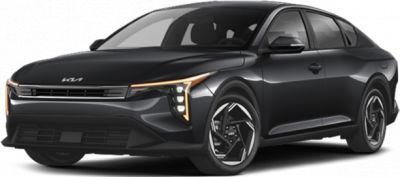
| Production: | 2024-present |
|---|---|
| Model Year: | 2025 |
| Length: | 4709 mm185.4 in |
| Width: | 1849 mm72.8 in |
| Height: | 1420 mm55.9 in |
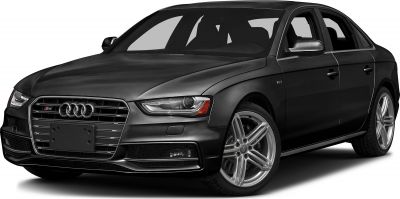
| Production: | 2011-2015 |
|---|---|
| Model Year: | 2011 |
| Length: | 4716 mm185.7 in |
| Width: | 2040 mm80.3 in |
| Height: | 1406 mm55.4 in |
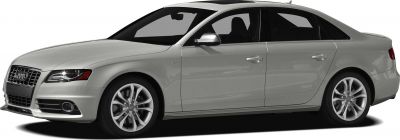
| Production: | 2009-2011 |
|---|---|
| Model Year: | 2009 |
| Length: | 4717 mm185.7 in |
| Width: | 1826 mm71.9 in |
| Height: | 1406 mm55.4 in |
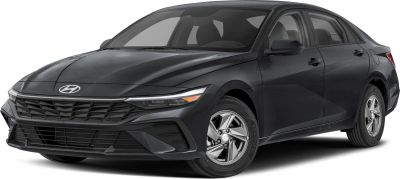
| Production: | 2023-present |
|---|---|
| Model Year: | 2024 |
| Length: | 4710 mm185.4 in |
| Width: | 1825 mm71.9 in |
| Height: | 1420 mm55.9 in |
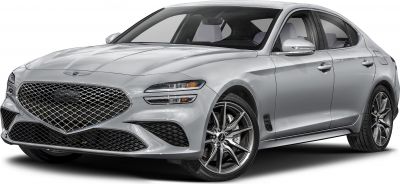
| Production: | 2020-present |
|---|---|
| Model Year: | 2021 |
| Length: | 4685 mm184.4 in |
| Width: | 1850 mm72.8 in |
| Height: | 1400 mm55.1 in |
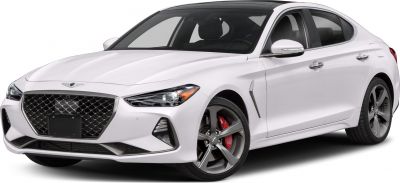
| Production: | 2017-2020 |
|---|---|
| Model Year: | 2018 |
| Length: | 4685 mm184.4 in |
| Width: | 1850 mm72.8 in |
| Height: | 1400 mm55.1 in |
